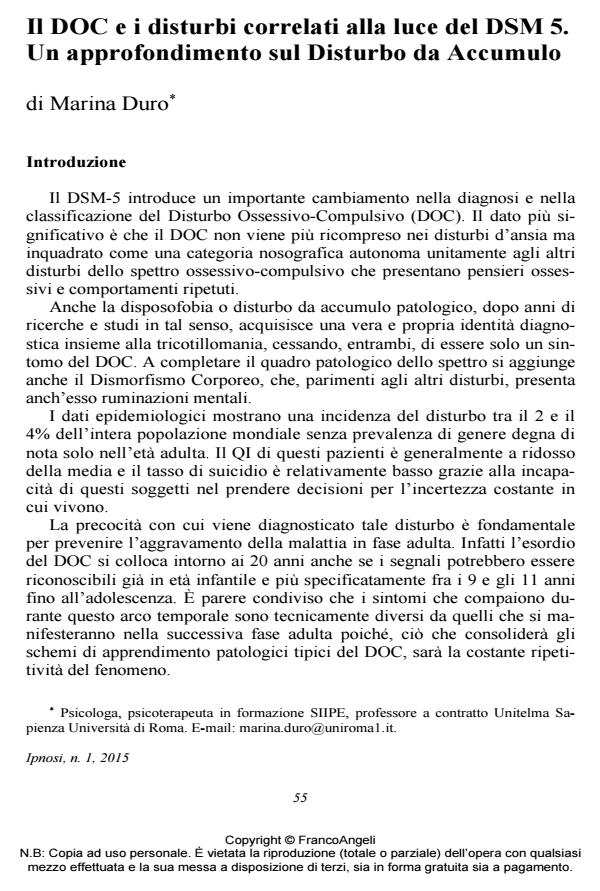Il DOC e i disturbi correlati alla luce del DSM 5. Un approfondimento sul Disturbo da Accumulo
Titolo Rivista IPNOSI
Autori/Curatori Marina Duro
Anno di pubblicazione 2015 Fascicolo 2015/1
Lingua Italiano Numero pagine 12 P. 55-66 Dimensione file 54 KB
DOI 10.3280/IPN2015-001004
Il DOI è il codice a barre della proprietà intellettuale: per saperne di più
clicca qui
Qui sotto puoi vedere in anteprima la prima pagina di questo articolo.
Se questo articolo ti interessa, lo puoi acquistare (e scaricare in formato pdf) seguendo le facili indicazioni per acquistare il download credit. Acquista Download Credits per scaricare questo Articolo in formato PDF

FrancoAngeli è membro della Publishers International Linking Association, Inc (PILA)associazione indipendente e non profit per facilitare (attraverso i servizi tecnologici implementati da CrossRef.org) l’accesso degli studiosi ai contenuti digitali nelle pubblicazioni professionali e scientifiche
The DSM-5 has introduced new important changes in the diagnosis and categorization of Obsessive-Compulsive and Related Disorders. The paper shows the main changes in this diagnostic class with particular regard to Obsessive- Compulsive Disorder and Hoarding Disorder; the aim of this work is to focus on the effectiveness of ericksonian hypnotic approach in disorders like Hording Disorder which are still not deeply esplored. Due to the inseparable mind-body relation, the modified state of counsciousness extends its effectiveness even to other disorders comorbid with OCD, for example by attenuating symptoms not only belonging to free anxiety as seen in the present case report.
Parole chiave:Spettro ossessivo-compulsivo, disturbo da accumulo, ipnosi, ansia, psicosi.
- The Council and the Court: Shared Objectives or Opposing Views on the Crime of Aggression Yassin M'Boge, in SSRN Electronic Journal /2010
DOI: 10.2139/ssrn.1641142
Marina Duro, Il DOC e i disturbi correlati alla luce del DSM 5. Un approfondimento sul Disturbo da Accumulo in "IPNOSI" 1/2015, pp 55-66, DOI: 10.3280/IPN2015-001004